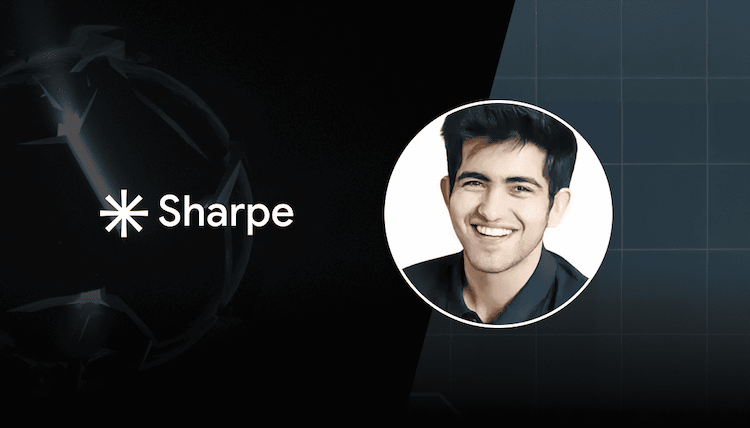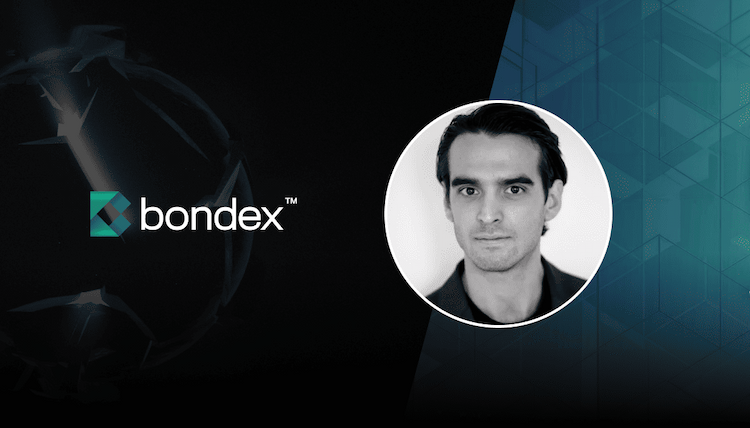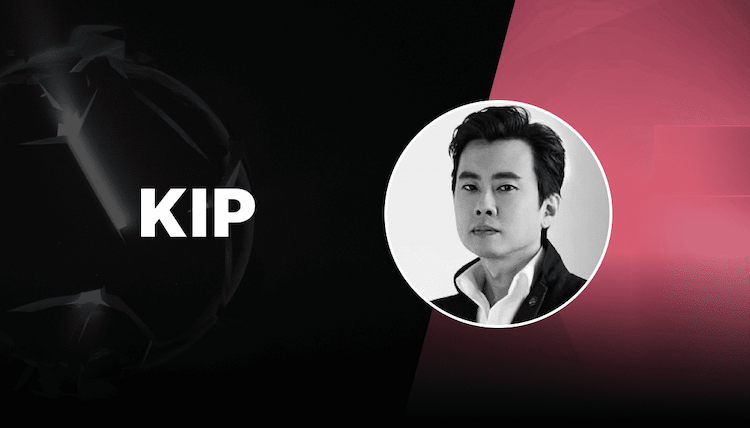Founder Stories
Derek Yoo - CEO of Moonbeam
Discover the latest Founder Stories with Moonbeam's CEO, Derek Yoo.

Hello Community,
We’ve got some brilliant projects within our portfolio and want to tell you more about the founders and teams behind them. On a regular basis, you will have the opportunity to learn more about specific projects through our interviews. Feel free to post any questions you may have further down in the comments section.
In today’s interview, we had the chance to speak with Derek Yoo, CEO of Moonbeam. Let’s go!
Hi Derek, it is a pleasure to have you here. Could you please start by introducing yourself: where are you from, where are you based, and what’s your story?
Hi, I’m Derek Yoo, and I’m the CEO of PureStake. We work on the project Moonbeam. I’m currently based in Boston, but the team working on Moonbeam is distributed internationally.
I’ve spent the majority of my career building software and cloud technology companies primarily in the web2 space. Notably I started a cloud company called Fuze and helped grow that into a 700 person company. But since the beginning of 2019, I’ve been working in the web3 space at PureStake. Having this web2 company building experience has been very helpful in building Moonbeam as a project.
How and when did you develop the idea about Moonbeam? How did you grow the team?
The idea for Moonbeam was conceived in late 2019. It was born from the realization that we are living in a world with an ever-increasing number of blockchains. As soon as you believe this, the key question becomes how these blockchains will communicate with each other. The Moonbeam concept was to create a smart contract platform that is easy to build on and is designed for cross-chain interoperability scenarios. This concept led to a lot of the design choices that ultimately resulted in what Moonbeam looks like today – choices such as building with Substrate, becoming a parachain on Polkadot, providing a full Ethereum-compatible environment, etc.
I believe that hiring is one of the most important things that a CEO can do is hire the right people. I’ve personally interviewed and recruited all of the 42 employees we have. At a slow rate of hiring there is no reason that the leaders of a project can’t be the primary recruiters for the project. Screening candidates for culture fit is just as important as any technical skills and is the biggest mistake that early teams make. You can’t outsource this part of the hiring process.
What challenges are you trying to solve at Moonbeam?
Moonbeam aims to dramatically improve the user experience in Web3 today, which is highly fragmented and tribal. We’re working to create a world where users can tap into their entire portfolio from one application rather than the status quo of traditional bridging experiences. We’ve created a platform that makes these kinds of experiences possible through: compatibility and cross-chain interoperability with many blockchains, an excellent development environment with unmatched tool support, and a modern proof-of-stake architecture built on Substrate.
The compatibility priority manifests in Moonbeam’s full Ethereum implementation in Substrate that provides the core smart contract functionality. Surrounding that is a complete set of infrastructure and tools such as Etherscan and Chainlink that developers expect when coming from a smart contract platform like Ethereum mainnet. And last but certainly not least, a variety of cross-chain messaging options including Polkadot XCM, Axelar, and Nomad. These are what power connected contracts on Moonbeam, which are able to work with any asset or service regardless of which blockchain they are on. This is the main challenge we see ourselves as solving. Allowing devs to build apps that span multiple blockchains which are more efficient and offer superior user experiences.
Could you explain the relationship between Moonbeam and Moonriver?
Moonriver is the canarynet of Moonbeam, a more experimental chain, yet one that operates under real economic conditions. New code is shipped to Moonriver first where it is vetted for a number of weeks, before that same code is deployed onwards to Moonbeam as the final destination. Moonriver is a parachain on Kusama whereas Moonbeam is a parachain on Polkadot. Moonriver and Moonbeam will continue to operate as independent chains with distinct communities and deployed applications. They are like sister and brother in the same family – they are similar yet different, and they both can be successful as they grow up.
Where to start to learn more about Moonbeam (developers and non-developers)?
The best place to start is the moonbeam website (https://moonbeam.network/). But we have also put a ton of effort into our developer docs site (https://docs.moonbeam.network/). This site has howtos, tutorials, etc. We also have a YouTube Channel with many of the talks we have given at conferences and on other topics: Moonbeam Network YouTube Channel To be able to talk to our community and ask questions, the best place is discord: (https://discord.com/invite/moonbeam).
Can you tell us more about a few cool projects building on Moonbeam that you are closely working with?
Moonwell (https://moonwell.fi/) is a great example of the kind of team that is building on Moonbeam. Moonwell is a core lending and borrowing protocol that serves as a central pillar of the defi ecosystem. This is a very sophisticated team that has put safety first every step of the way.
Prime Protocol is an example of a protocol that is using connected contracts on Moonbeam to serve users and assets that are remote chains. This will unlock things like the ability to use an asset on one chain as collateral to borrow on another chain. Their master contracts are on Moonbeam, but they support deposits of assets on many remote chains. Deposits create cross-chain messages which are routed back to the master contracts on Moonbeam. In this way, the master contracts have full visibility into the state of the system across all chains. This allows deposits on one chain to be used on another chain, creating significant efficiencies.
How does Moonbeam differ from the competition?
Moonbeam has pioneered cross-chain connected applications, which provide users with unified access to users, assets, and services. Applications built on Moonbeam using this approach can tap into functionality from Ethereum, Cosmos, Avalanche, and Polkadot from a single instance of their application. They can do this via Moonbeam’s cross-chain connected contracts, which are powered by messages being sent across chains. Moonbeam uniquely supports XCM as a messaging transport through being a parachain on Polkadot. But we also support cross-chain messaging systems such as Axelar and Nomad as well. Native support for cross-chain messaging means that Moonbeam is especially good at supporting dapp developers with a need to support many kinds of assets and use cases across many chains. We are big believers in the power of using a cross-chain connected approach to dapp development where there is a single application powered by smart contracts on different chains that are connected to each other. This allows for both more efficient protocols, but also for superior user experiences.
Of course, congratulations on Moonriver winning the Kusama Parachain slot: could you tell us a bit more? How does this affect the future of the project?
We renewed our Moonriver parachain lease on Kusama extending the lease for another 48 weeks. This was self funded by the Moonbeam Foundation as the most efficient way to guarantee the continued and uninterrupted operation of Moonriver. The Moonbeam Foundation is of course committed to supporting both Moonriver and Moonbeam long term. The ultimate goal would be for each chain to self fund via onchain funds that are owned by the protocol.
Anything else you would like to share with us?
The most interesting thing happening on Moonbeam right now is the development of these new kinds of applications that leverage messaging systems to create cross-chain connected dapps and protocols. These use cases are uniquely enabled by cross-chain connected contracts on Moonbeam using technologies like XCM for connectivity. Teams currently working on cross-chain scenarios on Moonbeam include Uniswap, Lido, Osmosis, Centrifuge, and Prime Protocol. Several of these scenarios are live today and more are coming in the second half of 2022. Protocols that leverage cross-chain connected contracts will both be more efficient and will be able to provide superior user experiences. As a result we expect large growth in apps that need these capabilities. And our aim is to make Moonbeam the best possible place to build these cross-chain connected applications.
--
Thanks a lot for your time Derek and good luck with your project!
The Morningstar Ventures Team


